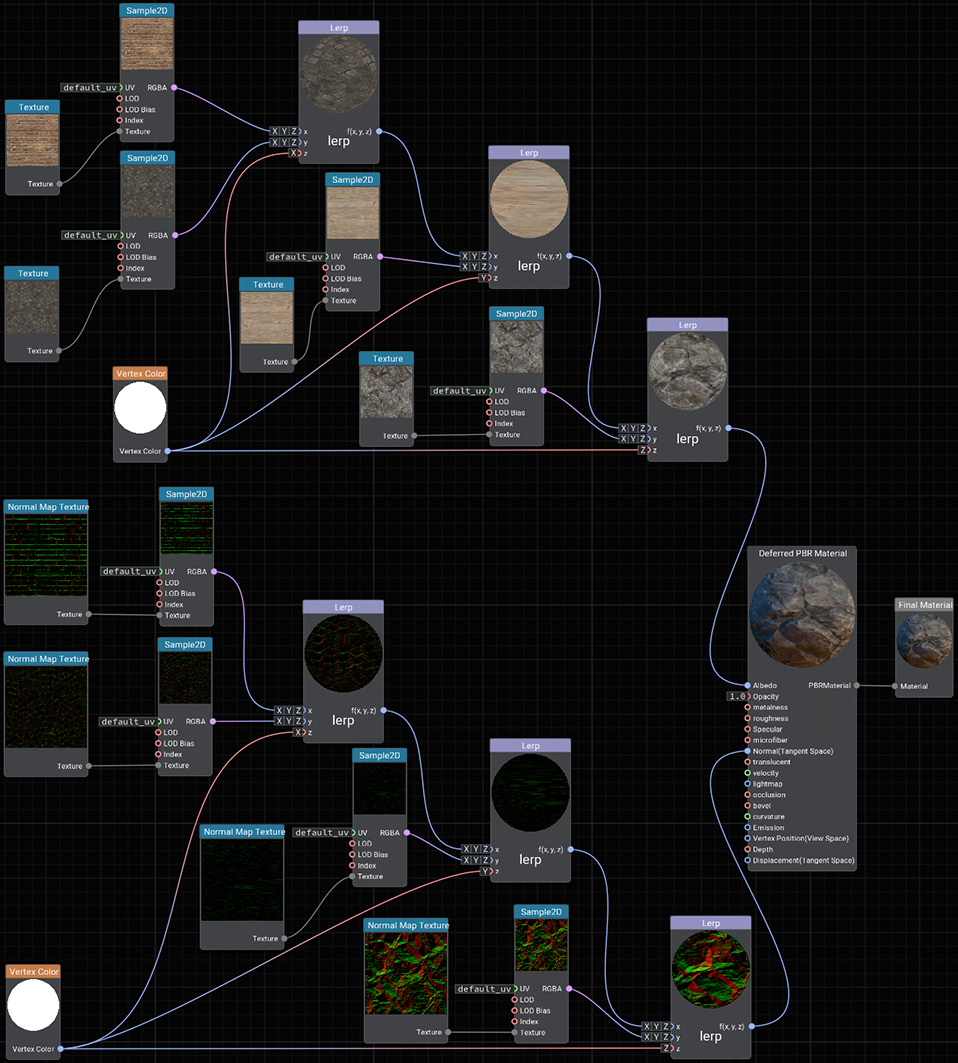Vertex Color Sample
This material graph sample demonstrates how to use vertex color for texture blending when creating materials.
- Each of the color channels (RGB) gets its own Linear Interpolation expression.
- The data from the first albedo Texture (0) sampled by the Sample2D node is plugged to the x port of the first Lerp node.
- The data from each of the other three albedo Textures (1-3) sampled by the corresponding Sample2D node is plugged to the y port of its corresponding Lerp node.
- The first Lerp node corresponding to Texture 1 plugs into the x port of the Lerp node corresponding to Texture 2, with Alpha driven by the Red channel from the vertex color (connected via the X port adapter).
- The second Lerp node corresponding to Texture 2 plugs into the x port of the Lerp node corresponding to Texture 3, with Alpha driven by the Green channel from the vertex color (connected via the Y port adapter).
- The third Lerp node corresponding to Texture 3 plugs into the Albedo port of Deferred PBR Material master material node, with Alpha driven by the Blue channel from the vertex color (connected via the Z port adapter).
- Four Normal maps sampled by the corresponding Sample2D nodes have the same kind of setup of Linear Interpolation expressions.
Finally, the data output is passed to the Final Material node.
Last update:
2021-04-29
Help improve this article
Was this article helpful?
(or select a word/phrase and press Ctrl+Enter)
